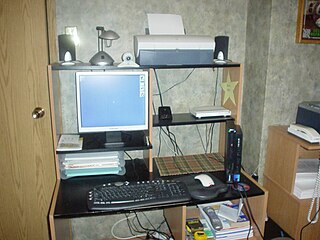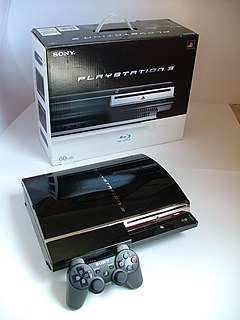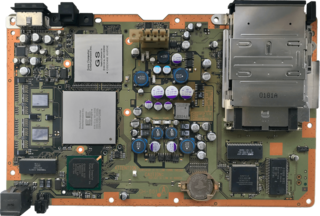This article is being considered for deletion in accordance with Wikipedia's deletion policy. Please share your thoughts on the matter at this article's deletion discussion page. |
This article has multiple issues. Please help improve it or discuss these issues on the talk page . (Learn how and when to remove these template messages) (Learn how and when to remove this template message)
|
Homebrew for the PlayStation 2 refers to the independent development of video games by hobbyists for the PlayStation 2 video game console.
Sony released a Linux-based operating system for the PS2 in a package that also includes a keyboard, mouse, Ethernet adapter and HDD. Currently, Sony's online store states that the Linux kit is no longer for sale in North America. However, as of July 2005, the European version was still available. The kit boots by installing a proprietary interface, the run-time environment, which is on a region-coded DVD, so the European and North America kits only work with a PS2 from their respective regions.
In Europe and Australia, the PS2 came with a free Yabasic interpreter on the bundled demo disc for some time. This allows simple programs to be created for the PS2 by the end-user. This was included in a failed attempt to circumvent a UK tax by defining the console as a "computer" if it contained certain software. [1]
A port of the NetBSD project and BlackRhino GNU/Linux, an alternative Debian-based distribution, are also available for the PS2.
Using homebrew programs (e.g. 'SMS Media Player' [2] ) it is possible to listen to various audio file formats (MP3, OMA, Ogg Vorbis, AAC, FLAC, AC3), and watch various video formats (DivX/XviD, MPEG1, MPEG2, MPEG4-ASP in AVI Container) using the console. Media can be played from any device connected to the console i.e. external USB/FireWire/thumb drive/hard disk drive (FAT32 only), the internal hard disk on early revision consoles, optical CD-R(W)/DVD±R(W) disks (modded systems or patched disks), or network shares (Windows Network or PS2 host: protocol).
Homebrew programs can be launched directly from a memory card on unmodified consoles by using certain software that takes advantage of a long known and used exploit, dealing with the boot part of the EE/IOP process (Independence).
A more recent development (May 2008) called Free McBoot allows homebrew programs to be launched without a trigger disc required by the older exploit. This also allows use of homebrew on unmodded systems without a functional disc drive. However, installation of the exploit to each individual memory card requires either an already exploited/modded system in order to launch the installer, or boot image that can load an app that loads ELF files (network adapter and hard drive also required). Copying from one memory card to another will not work. This newer exploit will not work on the very newest PS2s (SCPH-9000x model with BIOS 2.30 and up) but will work on all models prior to that. The newest versions of Free McBoot, version 1.90 and newer, also have the ability to install and boot from both Sony and non-Sony HDDs when using a "fat" PS2 and network adapter. [3] This support is called Free HDBoot or FHDB. With a few minor issues, it is now possible to game entirely from the HDD, without needing to use the optical disc drive nor a physical memory card.
Homebrew programs can be used to play patched backups of original PS2 DVD games on unmodified consoles, and to install retail discs to an installed hard drive on older models (ESR, HD Loader, HD Advance, Open PS2 Loader).
Homebrew emulators of older computer and gaming systems have been developed for the PS2. [4]
A new exploit (June 2020) called FreeDVDBoot allows homebrew programs and game backups to be launched from a burned DVD from the disc drive. This makes it really convenient to run homebrew and game backups with ease, more conveniently for the newer slim models that don't have any easy way of doing so. It is currently compatible with all PS2 Slim models. It works on certain DVD Player versions of the PS2 as of right now, and will eventually be ported to all DVD Player versions which will allow all PS2 Fat models to run the exploit. This exploit also makes it easier than ever to install Free McBoot onto a memory card or Free HDBoot onto a hard drive without having to use another method of doing so. The exploit tricks the PS2 into thinking it's reading a DVD movie when it's really booting a game backup or homebrew program, similarly to how ESR does. With uLaunchELF being the initial program that is launched, the user can have multiple homebrew programs on the disc or on a connected FAT32 formatted USB device that can be launched on the console.









